WTSCFL - The Future is Now! Informative Lunch Program
WTSCFL kicked off the first in-person program two years to the date of our last one! The Program, titled The Future is Now, was moderated by MetroPlan Orlando's Lara Bouck and covered innovative topics with underlying safety benefits.
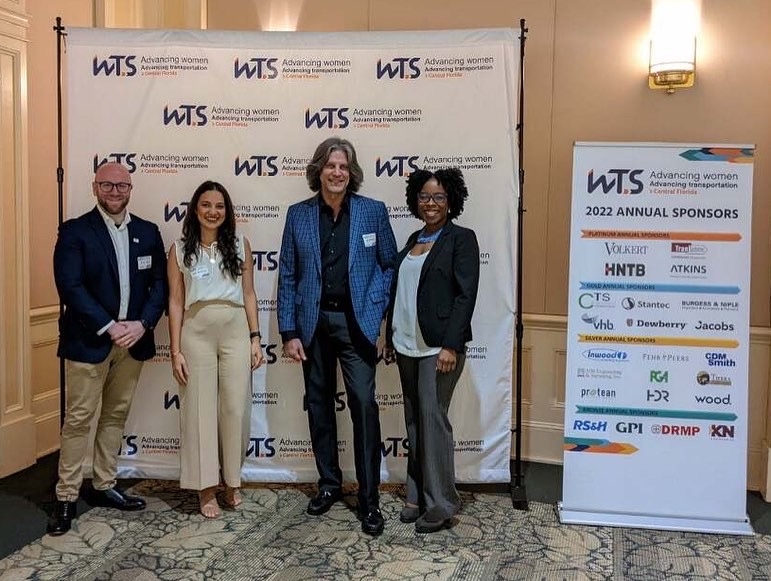
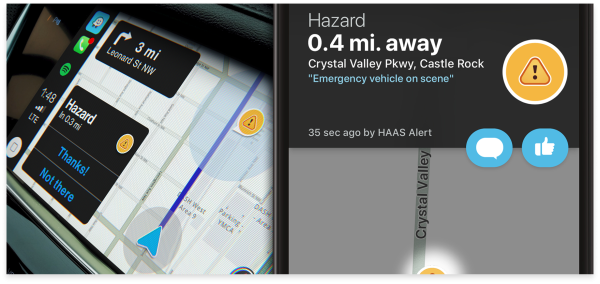
Brock Aun from Haas Alert started with a discussion of digital in-vehicle alerting. Although all states have Move Over Laws to help protect first responders, every 60 seconds 7 responders are at risk based on data from the National Highway Transportation Safety Administration (NHTSA). Also, Emergency Safety Solutions reported that every 7 minutes a disabled motorist is struck on US roads. Part of the problem is the road is filled with disconnected hazards that alert drivers manually and inefficiently.
The solution is to connect and protect road users and assets in an accessible, real-time network for safety. Safety Cloud streams real-time digital alerts to motorists and connected cars through in-vehicle screens and mobile devices when responders are enroute or onsite, allowing drivers more time to make safe maneuvers earlier. The display is on the vehicle's screen and is based on input from the responders' vehicles for accurate information. Research shows improvements in various metrics that improves safety as shown on the graphic below.
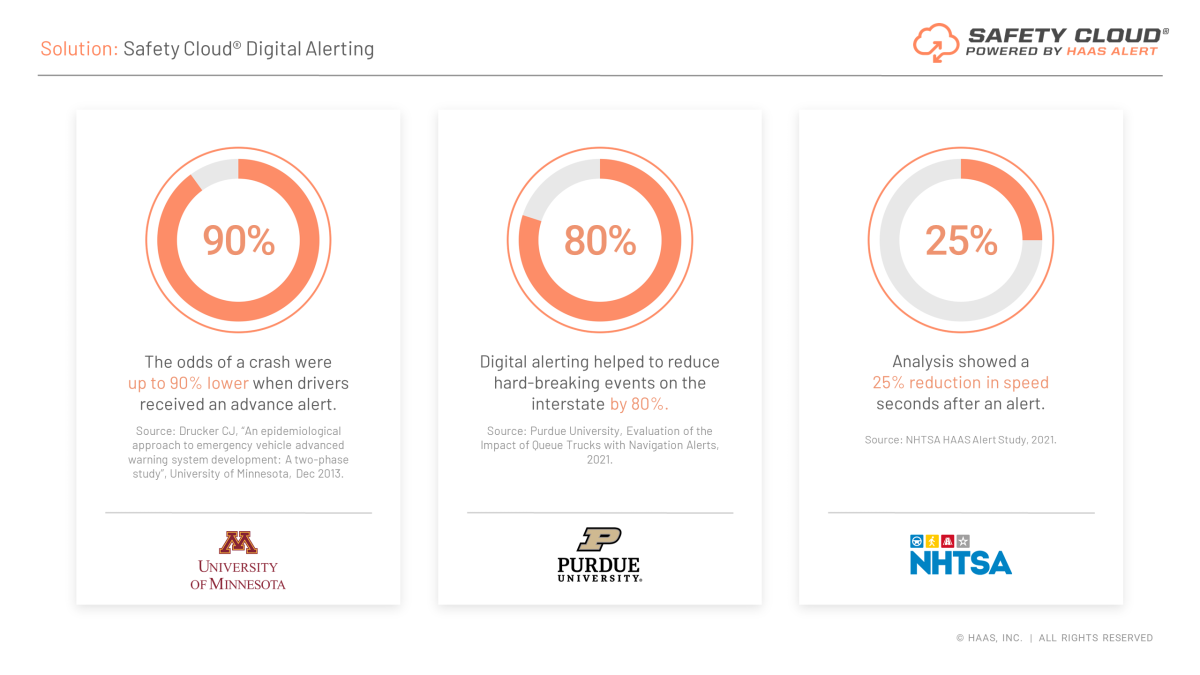
Dr. Nada Mahmoud discussed her research at the University of Central Florida on the safety benefits of big data, technology, and proactive traffic management (PATM). The advent of big data enables real-time analysis for traffic safety and operation. By integrating multiple data sources, the data could help us understand the relationship between the presence of traffic conflicts and the real-time crash contributing factors (e.g. volume, speed, traffic control status, weather, etc), and quantify the impact of these factors on real-time crash risk. She provided some insights from UCF studies that are related to PATM and using big data analytics to improve safety. She also provided an overview of the USDOT award winning safety data initiative (SDI). The SDI is a facility-specific real-time crash prediction algorithm using an AI-based hybrid framework. The overview of the computer tool is shown in the graphic below. The result is to identify crash-prone locations and hotspots for multiple crash types, including looking at secondary crash effects. The result is to identify crash-prone locations and hotspots for multiple crash types, including looking at secondary crash effects.
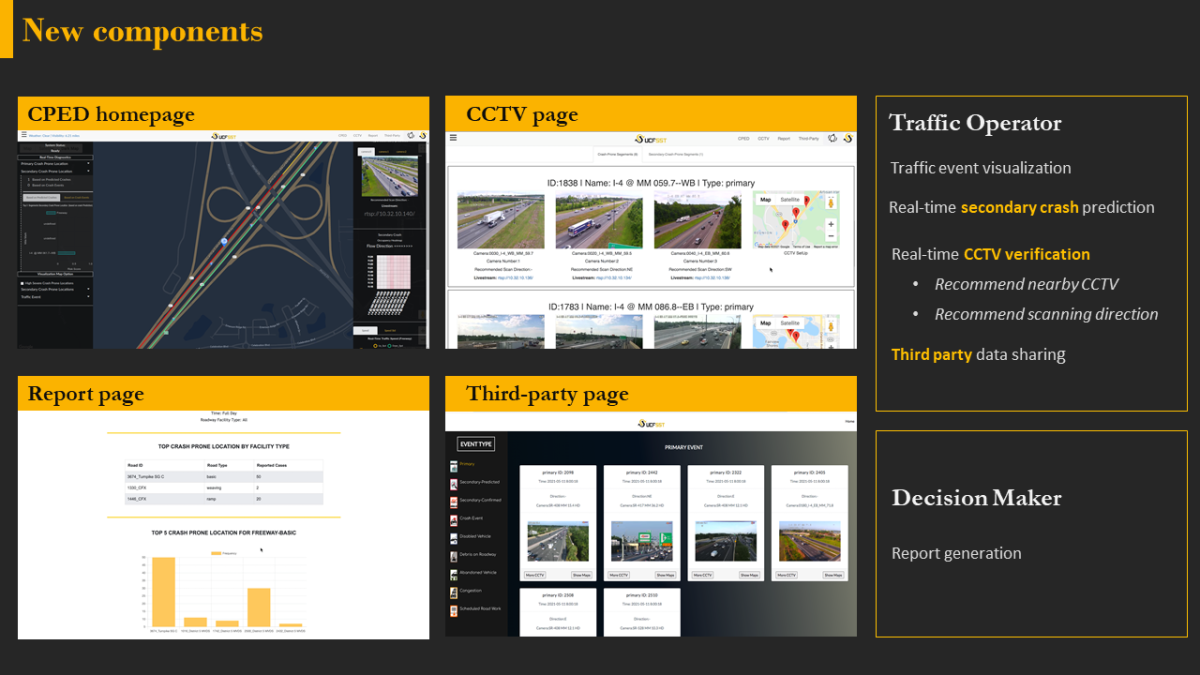
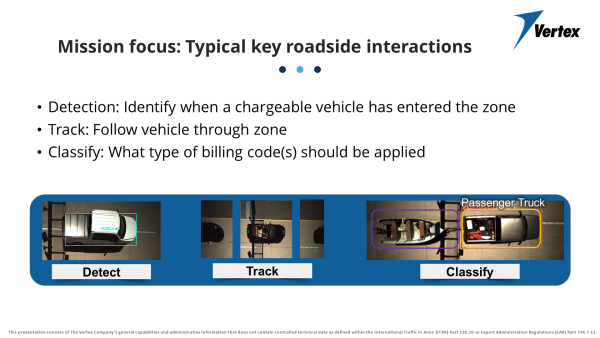
Ray Maikkula from Vertex (formerly Raytheon) discussed the Optical Detection Intelligent Network (ODIN). ODIN is a connected, cutting-edge product consolidating up to seven devices to accurately detect, track, classify and image vehicles. This device eliminates pavement loops for detection, tracks vehicles changing lanes by associating front and rear images and classifies using segmental optics updated with machine learning.
One person can lift the device and install with a single wrench - within 15 minutes - a definite benefit for reduced lane closures to install or changes out for maintenance. Also, the lightweight ODIN requires less infrastructure to mount.
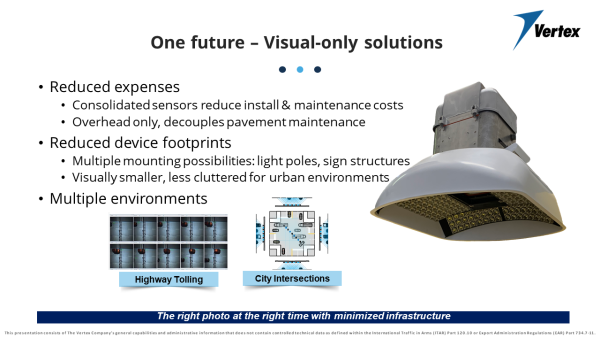
Currently, there are two installations of ODIN in North America. Testing alongside traditional all-electronic tolling methods has yielded high accuracy.
More than a dozen audience questions and discussion followed. Questions to each panelist focused on capabilities and implementation.